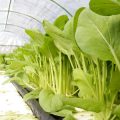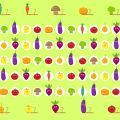Introduction to Bird Feeding in British Gardens
Bird feeding holds a special place in the hearts of many people across the UK. In British gardens, it is more than just a hobby—it is a cherished tradition that brings nature closer to home and supports local wildlife throughout the year. Whether in rural villages or bustling urban areas, bird feeders are a familiar sight, providing vital nourishment for birds and endless enjoyment for those who watch them. The cultural importance of bird feeding in Britain can be seen in the care homeowners take when selecting and maintaining feeders, as well as in community initiatives aimed at protecting garden birds.
British gardens attract a diverse range of bird species, with favourites such as robins, blue tits, great tits, goldfinches, and blackbirds often making regular appearances at feeders. These birds not only brighten up outdoor spaces but also play an important role in local ecosystems. The growing popularity of bird feeding has led to exciting innovations in feeder design, ensuring both the wellbeing of visiting birds and the continued delight of garden enthusiasts.
Traditional Bird Feeder Designs
British gardens have long embraced traditional bird feeder designs, seamlessly blending functionality with classic garden aesthetics. These feeders not only provide essential nourishment for native birds but also add charm to outdoor spaces throughout the year.
Classic Styles in British Gardens
The most familiar styles include sturdy wooden tables and simple hanging feeders. Wooden bird tables, often handcrafted from oak or pine, are a staple in many gardens. Their flat surfaces make them accessible for a wide range of species, especially robins, blackbirds, and sparrows. Hanging feeders, commonly made from metal or plastic, are designed to deter squirrels and larger birds while catering to smaller songbirds like tits and finches.
Seasonal Roles of Traditional Feeders
These feeders play different roles as the seasons change. During winter, they offer vital support when food is scarce. In spring and summer, they attract nesting pairs and fledglings, allowing birdwatchers to observe seasonal behaviours up close.
Comparison of Popular Traditional Feeder Types
| Feeder Type | Material | Main Visitors | Seasonal Benefits |
|---|---|---|---|
| Wooden Table | Oak/Pine Wood | Robins, Blackbirds, Sparrows | Accessible all year; easy cleaning; supports ground-feeding birds |
| Hanging Feeder | Metal/Plastic | Tits, Finches, Siskins | Keeps food dry; deters pests; ideal during wet weather |
| Cage-Style Feeder | Wire Mesh | Blue Tits, Great Tits | Protects seeds from larger birds; suitable for peanuts and suet balls in winter |
The enduring appeal of these classic designs lies in their practicality and their ability to complement the natural beauty of British gardens. While innovative feeders offer new features, traditional styles continue to play a vital role in supporting local birdlife across the UK’s changing seasons.
![]()
3. Recent Innovations in Bird Feeder Technology
Modern bird feeders for British gardens are seeing a wave of clever innovations, making it easier than ever to welcome a variety of wild birds while addressing common challenges faced by gardeners. One standout advancement is squirrel-proofing. Many new feeders feature weight-sensitive perches or cages that cleverly close off access to the food when heavier animals such as squirrels attempt to feed, ensuring your seeds are reserved for feathered visitors.
Another key improvement is weather resistance. British weather can be unpredictable, so todays feeders are often built with durable materials like powder-coated metal and UV-resistant plastics. These keep seeds dry and fresh, preventing spoilage from rain or condensation while blending neatly into traditional or modern garden aesthetics.
Ease of maintenance has also been prioritised. Easy-clean mechanisms such as twist-off bases, removable trays, and dishwasher-safe components are now common, helping prevent mould and disease—a crucial factor for both bird health and convenience.
Importantly, there is a growing focus on inclusive design for small bird species. Feeders with narrower ports and adjustable feeding stations cater to popular British birds like robins, blue tits, and finches, giving them safe access while deterring larger, more dominant species and unwanted pests. These thoughtful features ensure that every British garden, whether in the heart of a city or the countryside, can become a safe haven for local wildlife.
Eco-Friendly and Sustainable Materials
As sustainability becomes increasingly important, British bird feeder manufacturers are leading the way with eco-friendly innovations. There is a growing emphasis on using materials that minimise environmental impact while maintaining high quality and durability. By choosing recycled, biodegradable, and locally sourced materials, UK brands are offering environmentally conscious alternatives for garden enthusiasts.
Many new feeders now feature components made from recycled plastics, repurposed metals, and sustainably harvested wood. Biodegradable options, such as bamboo or plant-based composites, are also gaining popularity for their low impact on landfills. Moreover, sourcing materials locally reduces carbon emissions associated with transportation and supports the UK economy.
| Material | Source | Eco Benefit | Common Use in Feeders |
|---|---|---|---|
| Recycled Plastic | UK Post-Consumer Waste | Reduces landfill waste | Tubes, trays, roofs |
| Sustainably Harvested Wood | Local FSC-Certified Forests | Supports forest management | Frames, perches |
| Bamboo Composite | Fast-growing UK/EU sources | Biodegradable & renewable | Housings, decorative parts |
| Recycled Metal | UK Scrap Yards & Recyclers | Lowers energy use vs new metal | Cages, mesh guards |
| Plant-Based Bioplastics | UK/EU Agricultural Waste | No microplastics left behind | Scoops, small feeder parts |
The shift towards sustainable materials not only reduces the environmental footprint of bird feeding but also encourages responsible consumer choices. British gardeners can now support wildlife while actively protecting the countryside they cherish. By selecting feeders made from these innovative materials, you help foster a greener future for both birds and people.
5. Smart Bird Feeders and Technology Integration
The evolution of bird feeder design in the UK has embraced digital innovation, bringing an exciting new dimension to garden wildlife observation. Modern smart bird feeders now incorporate a variety of technological features that cater to British garden enthusiasts seeking a more interactive and informative experience. App integration is one of the most popular enhancements, allowing users to monitor feeding activity remotely from their smartphones or tablets. These apps often provide real-time notifications when birds visit, as well as data on which species are frequenting your garden.
Another notable advancement is the use of motion sensors. These sensors detect movement around the feeder, automatically triggering cameras or sending alerts to the owners device. This ensures that even elusive or rare visitors are not missed, offering an excellent opportunity for wildlife documentation without disturbing natural behaviour.
Integrated cameras have become particularly appealing for UK gardeners who enjoy photography or simply wish to observe birds up close. High-definition video and still images can be captured, stored, and shared easily—perfect for those involved in local birdwatching communities or school nature projects. Some smart feeders even support live streaming, creating a virtual window into your garden for family, friends, or social media followers.
These digital enhancements not only foster a deeper connection with local wildlife but also contribute to ongoing citizen science initiatives across Britain. By collecting and sharing data on bird populations and feeding habits, garden enthusiasts play a valuable role in national conservation efforts while enjoying the beauty and charm of their own outdoor spaces.
6. Design Aesthetics for British Gardens
Modern bird feeder innovations are thoughtfully designed to enhance the timeless beauty of British gardens. Contemporary feeders often take inspiration from classic garden elements, blending seamlessly with traditional landscapes. Designers now focus on muted, natural colours such as sage green, stone grey, and soft terracotta, which harmonise beautifully with native plants like lavender, foxgloves, and bluebells. The shapes of these new feeders are often subtle and organic—rounded forms, understated lines, and gentle curves that echo the elegant silhouettes found in historic English gardens. Many innovative designs also incorporate materials such as brushed metal or reclaimed wood, ensuring durability while maintaining a rustic charm. Importantly, these feeders are crafted to sit comfortably among hedgerows or flowerbeds without overpowering the existing scenery. This careful attention to aesthetics means that bird feeders no longer look out of place but rather become a natural extension of the garden itself, celebrating both functionality and visual harmony in true British style.
7. Conclusion: The Value of Innovation for British Wildlife
Innovative bird feeder designs have transformed the way we support and enjoy the wildlife in our British gardens. By embracing new features such as squirrel-proof mechanisms, weather-resistant materials, and easy-to-clean structures, these modern feeders cater to the needs of both birds and people. For birds, they offer safer feeding stations that reduce competition from pests and help prevent disease, ensuring a healthier local population. For garden owners, innovative feeders provide convenience, longevity, and the pleasure of observing a greater diversity of native species up close. Ultimately, adopting these forward-thinking designs supports sustainability and enriches our connection to nature. By choosing well-designed feeders, we create more rewarding outdoor spaces that encourage biodiversity and bring daily moments of beauty into our lives.

